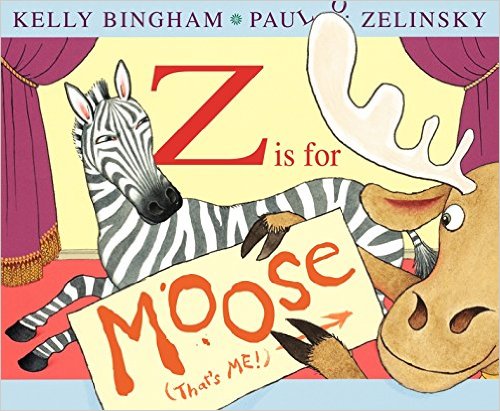 |
| Anne Arundel County Public Library. (2016). Amelia and Eleanor go for a ride. Retrieved from https://aacpl. beanstack.org/books/459 |
Book Summary: Amelia Earhart and Eleanor Roosevelt were two of the most famous women in the United States during the 1930’s, and they just happened to be very good friends. They got along well because they were both very adventurous and independent: Eleanor with her fast cars and political activism and Amelia with her flying. One night, Amelia takes Eleanor for a spin up in the air, close to the stars. Not enough adventure to sate their thirst, Eleanor returns the favor by taking Amelia out for a fast drive in her new car. After a night full of adventure, they return to the White House for dessert.
APA Reference:
Ryan, P. M. (1999). Amelia and Eleanor go for a ride: Based on a true story. New York City: Scholastic Press.
Impressions: This was a fun book! I love any story that promotes strong, independent women, and Amelia and Eleanor Go for a Ride definitely delivers that. Additionally, the author’s note at the end provides good historical information, as well as Ryan’s desire to share the story, which is a lovely peek into the author’s mind. And, while the illustrations are in black and white, they are exquisite, and Brian Selznick’s depictions of Eleanor and Amelia are incredibly accurate, which is important for a historical fiction picture book featuring two of America’s most famous ladies.
Professional Review:
Engelfried, S. (1999, September). Amelia and Eleanor go for a ride (book) [review of Amelia and Eleanor go for a ride]. School Library Journal, 45(9), 202. Retrieved from http://www.slj.com/
Gr 1-4 --Ryan imaginatively expands on a true historical event in this intriguing picture book. While dining at the White House in 1933, Amelia Earhart convinces Eleanor Roosevelt to join her on a night flight to Baltimore. The two women marvel at the sights and the excitement from the air. After landing, they sneak away for one more adventure, as this time, the First Lady treats her friend to a fast ride in her new car. The fictionalized tale is lively and compelling, and the courage and sense of adventure that these individuals shared will be evident even to children who know nothing about their lives. Without belaboring the message, the author clearly conveys how the "feeling of independence" that both women treasured was a crucial part of their personalities. Selznick's larger-than-life pencil drawings add considerably to the spirit of the tale. He captures the glorious beauty of the night flight and the beauty of the city below. Varied perspectives and background details consistently draw readers' eyes. An author's note clearly defines which elements of the story are factual. The women were actually accompanied by two I male pilots, but the author decided that it made it "much more exciting" to imagine that they were alone. "Almost all" of the dialogue comes from historical accounts. The title stands well on its own, but will also work as an excellent inspiration for further reading about the lives of Eleanor Roosevelt and Amelia Earhart.
Library Use: Amelia and Eleanor Go for a Ride would be a great book to include in a picture book display of strong, independent women, such as during March, which is Women’s History Month. Other good books to include in the display are Drum Dream Girl (2015) by Margarita Engle, Firebird (2014) by Misty Copeland, Harriet Tubman: Hero of the Underground Railroad (2007) by Lori Mortensen, Not One Damsel in Distress: World Folktales for Strong Girls (2000) collected by Jane Yolen, Venus and Serena Williams: Tennis Champions (2010) by Diane Bailey, and Sacagawea (2003) by Lise Erdrich.
 |
| Admin. (2015, November 25). Life beyond the lies. Retrieved from http://www.equipawoman.org/life-beyond-the-lies/ |








